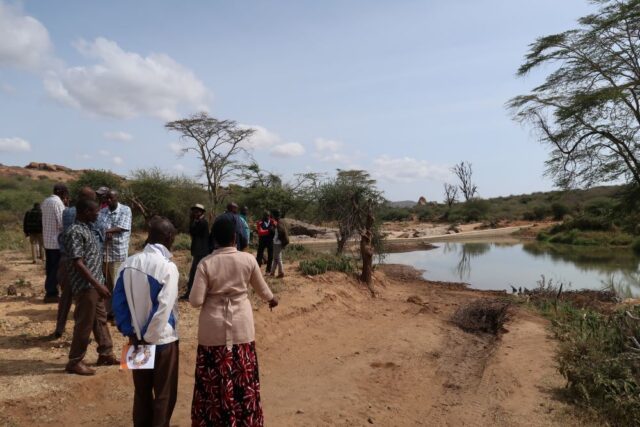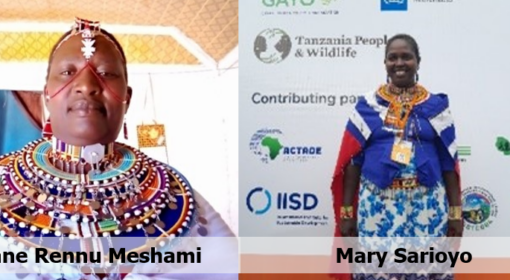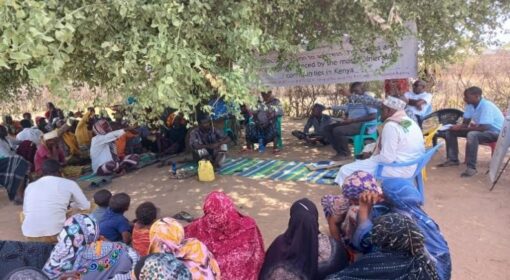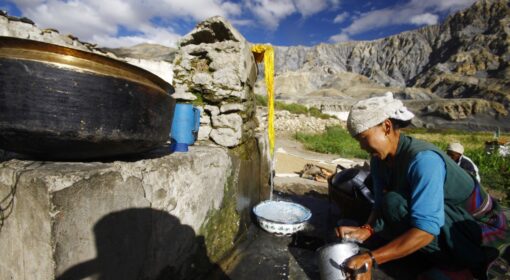By John Ole Tingoi (IMPACT NGO), Nancy Kadenyi, and Femke van Woesik
This blog is part of a dossier on locally-led adaptation, featuring insights and lessons from the Reversing the Flow (RtF) program. RtF empowers communities in Bangladesh, Burkina Faso, Ethiopia, Kenya, and Sudan to build climate resilience through direct funding and a community-driven, landscape approach.
Many organizations and development partners aim to empower communities against climate change and resource scarcity. Yet a common challenge persists: How to ensure communities access the funding they need to drive their own initiatives? In Kenya, the local NGO IMPACT is tackling this gap with a “local grant-making model” that places resources directly in the hands of communities.
Under the Reversing the Flow program, IMPACT regrants funds to communities for locally designed, water-resilient projects. Communities were invited to brainstorm, develop, and submit their proposals, which were reviewed through a standard selection process. One selected project focused on expanding the community’s water supply to address pressing local needs.

Once selected, the community developed a project plan and budget and sought technical expertise. With IMPACT’s referral, they collaborated with the sub-county water engineer to finalize the design. Funds were then transferred directly to the community’s account, where a team of designated signatories oversaw financial management and implementation. Community members documented progress with photos and receipts and submitted a final one-page report. Below is a step-by-step guide used by IMPACT for the regranting procedure in the RESTORE project:
1. Submission of the request to the ward committee
The community group submits a request to the Ward Committee (and IMPACT) for consideration. The committee reviews the request based on community needs and priorities and may conduct inquiries to better understand the proposal. The Ward Committee is a group of people selected by the community to represent them in local government forums where they can advocate for the community’s needs and priorities and oversee the implementation of the Ward Development Plan. In total, Kenya has 1450 wards, and each ward has a ward development committee representing different sectors.
2. Approval of the request by the ward committee and Inter-ward
If the Ward Committee approves the intervention, they inform the Inter-Ward Committee, which then reviews and also approves the intervention.
3. IMPACT Hub receives and processes the approval
IMPACT receives official communication from both the Ward and Inter-Ward Committees. Community Resource Persons (CRPs) reach out to the selected groups. If a group is unfamiliar with RESTORE, a project inception meeting is arranged.
4. Community groups consultations on the selection of interventions and governance
Community groups hold internal consultative meetings to decide on interventions. These meetings involve all members or the full community if the intervention concerns communal ownership. The RESTORE team is sometimes invited by the community groups in their consultative meeting for advice.
5. Submission of the proposed interventions-proposal
Groups submit their intervention proposals to the RESTORE Manager. RESTORE project unit analysis the submitted proposal and seeks clarification about them. The proposals are amended and approved with budget, workplan and activities.
6. Signing of agreements and Anti-Corruption Clause
IMPACT invites approved groups to sign the agreement and Anti-Corruption Clause. Signatories include representatives from the community group and the Chairpersons of the Ward and Inter-Ward Committees.
7. Administrative due diligence and facilitation of funds
The finance department conducts due diligence and facilitates the transfer of funds into the group’s bank account. Each group has a selected group leader holding different positions, such as treasurer, secretary, vice-chairperson, and Chairperson. Out of this leadership, three leaders and one community member are selected as the signatories of the bank account, and they oversee the management of funds into and out of the account. For transparency, during the group meetings, the
treasurer gives an update and overview of the financial expenditure for the group to give feedback/questions and trans.
8. Community groups confirm the receipt of funds
Community groups communicate to IMPACT about the receipt of funds through calls or emails.
9. Project Implementation and knowledge sharing
Ward and Inter-Ward Committees monitor project implementation. Learning visits are organized so newer projects can learn from earlier ones, supporting peer-to-peer knowledge exchange.
The experience in Kenya highlights how flexible, community-led grant-making fosters trust, accountability, and long-term sustainability. When communities are given the autonomy to identify needs, design solutions, and manage funds, they take full ownership; ensuring practical maintenance systems, drawing on local expertise, and aligning projects with real-life conditions. IMPACT’s model did not impose a pre-defined approach but instead enabled communities to lead every step, including working with professionals like the sub-county water engineer to co-develop context-specific solutions. This depth of control and alignment with local realities strengthens both commitment and results, proving that local groups can independently plan and manage effective resilience projects.



